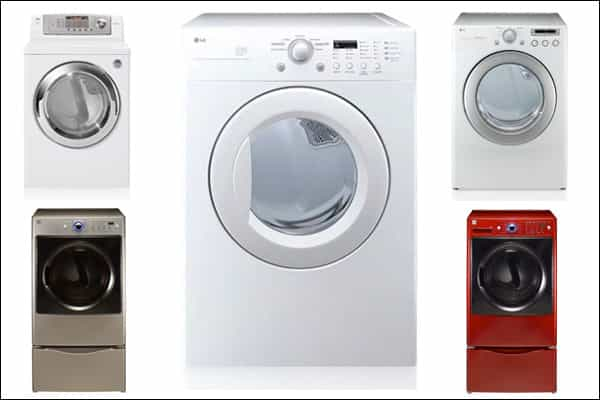The climate in Italy is not as bad as that of the Nordic countries where not only the number of rainy days exceeds the sunny ones, but the actual hours of light are scarce, so much so that it is necessary to use the dryer. The best-known ones are powered by electricity, and although technological models are available on the market that offer maximum potential with very low consumption, they do not prove to be a good investment. The recommended alternative is the gas dryer which however has a higher cost. Continue reading this guide for useful advice on how to choose the right dryer.
How much does it cost
The price of a gas dryer is around 800 – 900 euros (compared to 350 – 400 for electric ones). Such a high cost depends on the fact that there are currently few models and foreign brands (especially American) on the Italian market that also guarantee after-sales assistance. However, the expense pays for itself rather quickly as consumption can be up to 70% lower. Furthermore, they have a reduced impact on the ecosystem: this type allows you to reduce drying times and the garments will also be softer and fluffier, making ironing operations easier.
Condensation or ventilation, which one to choose?
Gas dryers can be divided into two groups, depending on the system used to eliminate humidity: condensation and ventilation. The condensing ones in turn are divided into two subgroups and can introduce the humid air directly outside (they are not recommended in the case of small rooms) or cool it using a condenser. In this case it can be transformed into water and reused for the iron (because it is limescale-free). Vented dryers have a hose similar to that used for boilers. To obtain maximum energy savings it is preferable to purchase class A products (or the innovative A and A ) so as not to exceed 3 kW of consumption, even if the latest models allow you to dry a load of laundry of 1 kilogram in 3-4 minutes with an estimated cost of 20 cents per hour of use. In addition to this, it is important to adopt some small precautions such as inserting laundry that has been spun to maximum and selecting the drying program suitable for the fabric of the garments. It may also be useful to set the timer and start the dryer during the night to take advantage of the advantages of the dual-rate tariff.
Weight and size
Gas dryers have standard dimensions of 60x60x85, but versions with a width of 45 centimeters are also available. They have the same shape as washing machines and the possibility of loading clothes to dry from the front or from above. Inside there is the basket (in some models the lighting is also installed), the heating system, the cooling fan, the gas exhaust system and a filter that collects hair and dust. Among the options there is the practical end-of-program sound system with variable sound intensity (especially useful in case of night-time operation). When the gas dryer reaches the necessary temperature level, the heated air is blown into the drum which rotates to distribute the heat evenly. The gas exhaust system, which consists of a pipe, must necessarily be installed outside. Compared to electric models, there is also a notable reduction in noise. Some gas models are designed to be stacked on top of the washing machine, saving even more space.
You may also like
Home Cleaning: A Glimpse into the Future of Floor-Cleaning Robots in 2025
In 2025, the world of floor-cleaning robots will witness significant innovations and market shifts. From advanced models to competitive deals, this comprehensive exploration examines emerging technologies, geographic trends, and purchasing advice to help consumers make informed decisions in acquiring their ideal floor-cleaning robot.
Electric Razors: Innovations and Market Trends
As we step into 2025, the electric razor market is brimming with innovations that promise to transform personal grooming. This article delves into the latest models, market trends, and emerging technologies in the electric razor industry. Explore the best offers available and understand the regional buying trends shaping the future of personal grooming.
Electric Toothbrushes: Technologies and best deals
Electric toothbrushes have become a staple in oral hygiene routines, thanks to innovations, affordability, and market trends influencing global consumer choices. This article delves into the latest models, technologies, best deals, and geographical trends shaping the choice of electric toothbrushes today.
All-Season Motorcycle Tires in 2025
The year 2025 marks a pivotal moment for all-season motorcycle tires, with new models featuring cutting-edge technology, competitive pricing, and robust market trends. This comprehensive analysis explores advancements, regional market impacts, and exciting offers in the all-season motorcycle tire sector.
